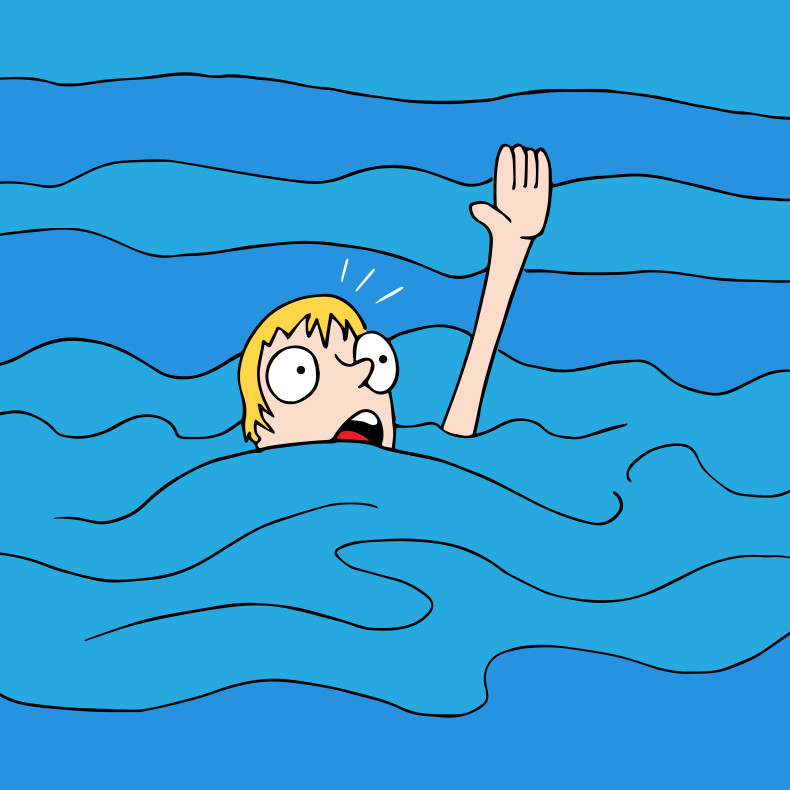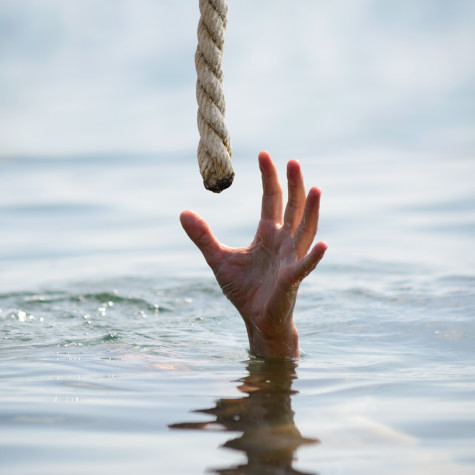Debunking Hollywood is LWON’s very occasional series that takes a hard science look at common TV and movie tropes.
“Help!”
The lifeguard straightens in his chair, craning his neck to find the citizen in peril.
“Help!”
Over there, by the barrier floats! The victim’s face is obscured by great splashes raised in her violent struggle for survival. With a panicked plea, she kicks desperately and raises her arms in the signature distress wave, bending her elbows and crossing her hands above her head.
“I can’t swim!”
The lifeguard is up in a flash, ring buoy in hand as he dashes toward her, calling out reassurances. He tosses the life-ring to within reaching distance and tells her to grab it.
“Just a little to your left!” He calls.
With a desperate lunge, she clings to the floating life-line, and the lifeguard pulls her to safety and lifts her to the beach.
***
This scenario – reinforced by television and movie scenes – has become society’s platonic ideal of drowning, and it held sway even in lifeguard training up until the 1960s. That’s when Frank Pia, Chief Lifeguard on Orchard Beach in the Bronx, realized it didn’t square with the thousands of drownings and near-drownings he’d witnessed in his job.
He enlisted an amateur photographer to film his own rescues and reviewed the footage of drowning events, eventually identifying the set of instinctive responses of someone who is about to sink out of sight. The recordings showed onlookers unconcerned with the drowning beside them.
So ingrained was the popular notion of drowning that Pia’s message became, “Drowning doesn’t look like drowning.” (Pia is a pioneer of water safety. Thanks to him, lifeguard duties have been pared down radically to all-but-eliminate non-surveillance activities, and he has been immortalized in the Pia Carry, a move that holds a victim’s head above water while the guard swims them to shore. )
In his 1971 documentary On Drowning – 17 minutes of actual near-drowning and rescue footage – he reveals the impossibility of any shouting, waving or even kicking in the last 20 to 60 seconds between near-drowning and final submersion. Drowning is a gentle and silent event. It looks like someone treading water lamely, with his head tilted back. Parents, even those beside their kids in the water, might watch it happen and feel no distress, because in young children it looks a little like dog-paddle.
It’s usually not a case of an overconfident swimmer venturing out to the middle of a lake — 90% of drowning happens within 10 meters of safe footing, and everything in that last minute is dictated by the autonomic nervous system. The drowner has no choice, no conscious action. He is already oxygen deprived. Vocalizing is off the table, because every square centimeter of lung capacity is reserved for the quick out-in breath every time the mouth bobs above the surface.
The arms cannot wave because they are flapping feebly out to the sides, pushing down on the surface of the water, but the motion doesn’t propel the swimmer anywhere. The legs float limply. In response to an attempt to save him, he doesn’t respond in any way until physical contact is made. (Typically he can’t see anything you throw to him anyway). Once lifted into a position where he can breathe, he turns his head immediately to find safety – something to grab.
So strong is this pull to solid objects that in the absence of lifeguard training, bystanders are advised to wait until a drowning person has sunk, unconscious, before trying to swim them out. As common as rescuer drowning events are, I can’t imagine anyone standing by, and knowingly following this advice, but plenty this summer will follow it unwittingly.
Image: Shutterstock


Sad, people drown without a sound.